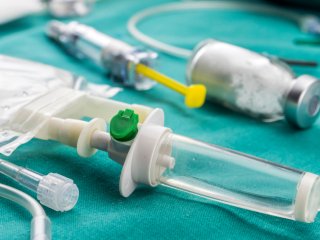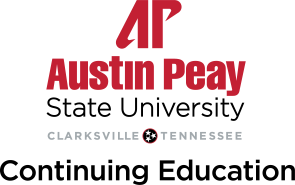
- Description
- Objectives
- Outline
- Materials
- Certification
- System Requirements
- Watch a Demo
Our Surgical Instrument Technician program delivers all the latest information, skills, and practice you need to succeed in the medical field as a professional. Not only do we cover the skills of a Surgical Instrument Technician, we cover Medical Terminology and Clinical Medical Assistant duties.
Medical Terminology
After completing this course, you should be able to:
- Identify how to gain and understand the basic word structure in medical terminology
- Recognize how to relate the medical terms to the structure and function of the human body
- Identify body systems, body cavities, and planes of the body
- Define words by dividing them into their component parts
- Recall the terminology used with medical specialists and case reports
Clinical Medical Assistant
After completing this course, you should be able to:
- Define the daily procedures performed by the physician and medical assistant
- Identify the proper guidelines of obtaining vital signs and patient information
- State the methods of the administration of medication and intravenous therapy
- Define the various guidelines for performing phlebotomy and microbiology charges
- Identify the standard guidelines for OSHA, sterilization and disinfection
Surgical Instruments
After completing this course, you should be able to:
- Recognize instruments used for laparoscopic, robotic, and general procedures
- Describe how to use instruments for reconstructive, orthopedic, neurosurgical, and cardiovascular procedures
- Examine instruments used for oral and ophthalmic procedures
- Recall how to set up and break down a surgical workspace
- Identify proper techniques for sanitization and sterilization
Medical Terminology
Medical Terminology Module 1
Basic Word Structure
- Word Analysis
- Combining Forms
- Suffixes & Prefixes
- Pronunciation of Terms
- Exercises & Applications
Medical Terminology Module 2
Organization of the Body
- Body Systems and Cavities
- Divisions of the Back
- Planes of the Body
- Pronunciation of Terms
- Exercises & Applications
Medical Terminology Module 3
Suffixes
- Introduction to Suffixes
- Suffixes and Terminology
- Diagnostic & Procedural Suffixes
- Pronunciation of Terms
- Exercises & Applications
Medical Terminology Module 4
Prefixes
- Combining Forms & Prefixes
- Prefixes and Terminology
- Define Common Prefixes
- Pronunciation of Terms
- Exercises & Applications
Medical Terminology Module 5
Medical Specialists & Case Reports
- Medical Specialists
- Combining Forms & Vocabulary
- Case Reports & Terminology
- Pronunciation of Terms
- Exercises & Applications
Medical Terminology Module 6
Body Systems – Part 1
- Cardiovascular System
- Digestive System
- Endocrine System
- Female Reproductive System
- Lymphatic System
Medical Terminology Module 7
Body Systems – Part 2
- Male Reproductive System
- Musculoskeletal System
- Nervous System
- Respiratory System
- Skin & Sense Organs
- Urinary System
**Outlines are subject to change, as courses and materials are updated.**
Clinical Medical Assistant
Clinical Medical Assistant Module 1
Keeping up with Medical Standards
- Introduction to the Medical Record
- Types of Medical Records
- Documentation in the Medical Record
- Medical Asepsis and the OSHA Standard
- Microorganisms and Medical Asepsis
- OSHA Bloodborne Pathogens Standard
- Regulated Medical Waste
- Bloodborne Diseases
Clinical Medical Assistant Module 2
Sterilization, Disinfection and Taking Vital Signs
- Introduction to Sterilization and Disinfection
- Definition of Terms
- Hazard Communication Standard
- Procedures for Disinfection, Sanitation and Sterilization
- Introduction to Vital Signs
- Measuring Body Temperature
- Taking a Pulse
- Calculating Respirations
- Performing Pulse Oximetry
- Measuring Blood Pressure
Clinical Medical Assistant Module 3
The Physical Examination
- Application of Body Mechanics
- Inspection
- Palpation
- Percussion
- Structure of the Eye
- Assessment of Color Vision
- Structure of the Ear
- Assessment of Hearing Acuity
- Hearing Acuity Tests
Clinical Medical Assistant Module 4
Promoting Healing and Obstetrics and Gynecology
- Introduction to Tissue Healing
- Local Application of Heat and Cold
- Cast, Splints, and Braces
- Measuring and Instructing Patients with Ambulatory Aids
- Introduction to the Gynecologic Exam
- Breast and Pelvic Examinations
- Vaginal Infections
- Prenatal Care
- Obstetrics
- Postpartum Visits
Clinical Medical Assistant Module 5
Pediatrics and Minor Office Surgery
- Pediatric Examination
- Carrying the Infant
- Pediatric Blood Pressure Measurement
- Collection of a Urine Specimen
- Pediatric Injections
- Instruments Used in Minor Office Surgery
- Sterile Dressing Change
- Assisting with Minor Office Surgery
- Sutures and Bandaging
- Administration of Medical and Intravenous Therapy
Clinical Medical Assistant Module 6
Cardiopulmonary Procedures and Reproductive Health
- Electrocardiography
- Structure of the Heart
- Cardiac Cycle
- Cardiac Dysrhythmias
- Colon Procedures
- Blood in the Stool
- Male and Female Reproductive Health
- Sigmoidoscopy
- Colonoscopy
Clinical Medical Assistant Module 7
Diagnostic Imaging and Clinical Laboratory
- Introduction to Radiology
- Introduction to Diagnostic Imaging
- Fluoroscopy
- Ultrasonography
- Computed Tomography
- Purpose of Laboratory Testing
- Types of Clinical Laboratories
- Laboratory Reports
Clinical Medical Assistant Module 8
Urinalysis and Phlebotomy
- Composition of Urine
- Analysis of Urine
- Rapid Urine Cultures
- Urine Pregnancy Test
- Serum Pregnancy Test
- Venipuncture
- Vacuum Tube Method of Venipuncture
- Skin Puncture Devices
- Microcollection Devices
Clinical Medical Assistant Module 9
Hematology and Blood Chemistry
- Components and Functions of Blood
- Hemoglobin Determination
- Hematocrit
- White and Red Blood Cell Counts
- Immunology
- Blood Chemistry
- Blood Glucose
- Managing Diabetes
- Glucose Meters
Clinical Medical Assistant Module 10
Medical Microbiology and Nutrition
- Introduction to Microbiology
- Microorganisms and Diseases
- Microbiologic Specimen Collection
- Culture and Sensitivity Testing
- Nutrients
- Carbohydrates
- Fat
- Protein
- Vitamins
- Minerals
Clinical Medical Assistant Module 11
Emergency Preparedness and Medical Procedures
- Introduction to Disaster and Emergency Planning
- Psychological Effects of Serious Emergencies
- Emergency Action Plan
- Fire Prevention Plans
- Office Crash Cart
- Emergency Medical Services System
- First Aid Kit
- OSHA Safety Precautions
Surgical Instruments
Surgical Instruments Module 1
Basic Instruments
- Care and Handling of Instruments
- Parts of an Instrument
- Instrument Categorization
- Instrument Sets
- Accessory Instruments
- Point of Use Decontamination
- Sterile Processing
Surgical Instruments Module 2
Basic and General Instruments
- Accessory Instruments
- Electrosurgical Pencil
- Forceps
- Scissors
- Intestinal Clamp
- Retractors
Surgical Instruments Module 3
Laparoscopic and Robotic Instruments
- Laparoscopic Cart
- Versa Step Trocars
- Lens Warmer
- Ligasure
- Endo Catch
- EndoWrist Tips
- Curved Scissors
- Cobra Grasper
Surgical Instruments Module 4
Obstetrics and Genitourinary Instruments
- Leep Loop Electrode
- Cord Clamp
- Uterine Biopsy Curette
- Irrigation Tubing
- Telescope Bridge
- Working Element
- Ball Loop Electrode
Surgical Instruments Module 5
Ophthalmic and Otorhinolaryngology Instruments
- Tonometer
- Fox Eye Shield
- Castroviejo Caliper
- Irrigating Needle
- House Strut Caliper
- Billeau Ear Loop
- House Joint Knife
Surgical Instruments Module 6
Oral and Reconstructive Instruments
- Mouth Mirror
- Potts Elevator
- Crane Elevator
- Root Tip Pick
- Kelly Scissors
- McKissock Keyhole
- Dermatome
- Watson Skin Graft Knife
Surgical Instruments Module 7
Orthopedic, Neurosurgical, and Cardiovascular Instruments
- Depth Guage
- Mallet
- Townley Caliper
- Bone Cement System
- Raney Clip Applier
- Scalp Clip Gun
- Cushing Bipolar Forceps
- Endopath Thoracic Trocar
Surgical Instruments Module 8
Operating Room Supplies and Surgical Setups
- Scrubs
- Shoe Covers
- Surgical Masks
- Eye Protection
- Surgical Setups
Surgical Instruments Module 9
Instrument Sterilization
- Environmental Responsibility
- Operating Room Set Up and Break Down
- Assembly, Inspection, and Protection
- Instrument Staining
- Infection Prevention
- Transitioning from High-Level Disinfection to Sterilization for Semi-Critical Devices
- Safe Reprocessing of Robotic Instruments
- Off-Site Transportation
- HIPAA for Surgical Technicians
**Outlines are subject to change, as courses and materials are updated.**
All course materials included.
Internet Connection
- Broadband or High-Speed - DSL, Cable, and Wireless Connections
*Dial-Up internet connections will result in a diminished online experience. Classroom pages may load slowly and viewing large audio and video files may not be possible.
Hardware Requirements
- Processor - 2GHz Processor or Higher
- Memory - 1 GB RAM Minimum Recommended
PC Software Requirements
- Operating Systems - Windows 7 or higher
- Microsoft Office 2013 or higher. Also, you could use a general Word Processing application to save and open Microsoft Office formats (.doc, .docx, .xls, .xlsx, .ppt, .pptx)
- Internet Browsers - Google Chrome is highly recommended
- Cookies MUST be enabled
- Pop-ups MUST be allowed (Pop-up Blocker disabled)
- The Kindle Reader App or VitalSource Bookshelf App are needed for many of our courses (No special equipment needed. This can be downloaded for FREE onto your computer.)
- PowerPoint Viewer (if you do not have PowerPoint)
- Adobe PDF Reader
- QuickTime, Windows Media Player &/or Real Player
MAC Software Requirements
- Operating Systems - Mac OS x 10 or higher with Windows
- Mac office programs or a Word Processing application to save and open Microsoft Office formats (.doc, .docx, .xls, .xlsx, .ppt, .pptx)
- Internet Browsers- Google Chrome is highly recommended
- Cookies MUST be enabled
- Pop-ups MUST be allowed (Pop-up Blocker disabled)
- The Kindle Reader App or VitalSource Bookshelf App are needed for many of our courses (No special equipment needed. This can be downloaded for FREE onto your computer.)
- PowerPoint Viewer (if you do not have PowerPoint)
- Adobe PDF Reader
- Apple QuickTime Media Player
